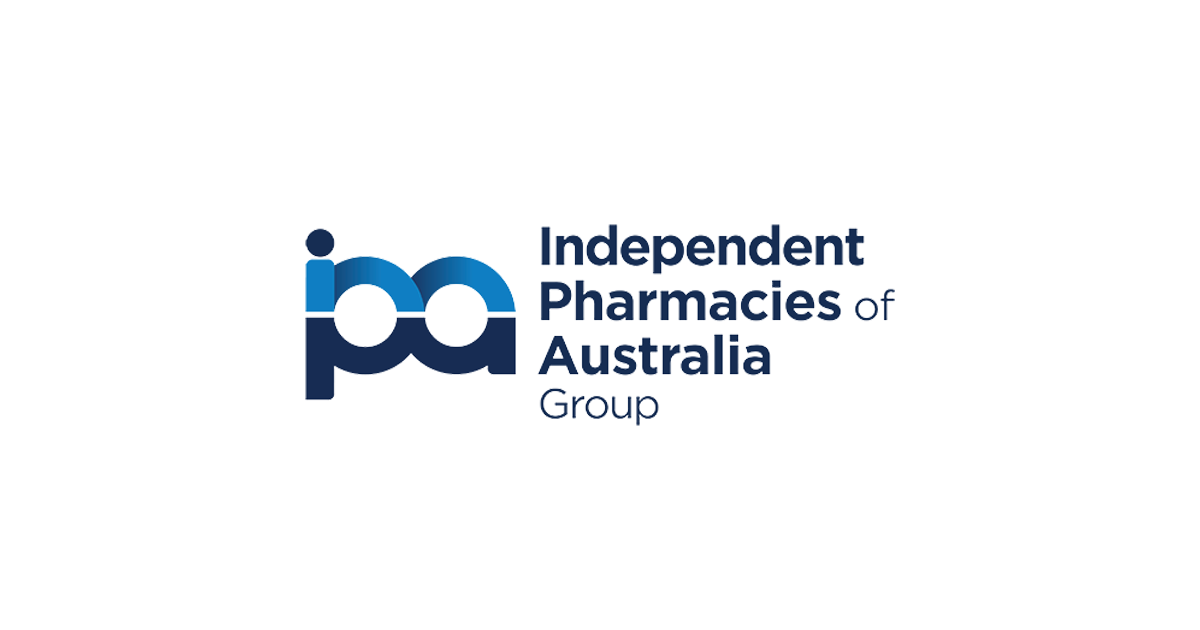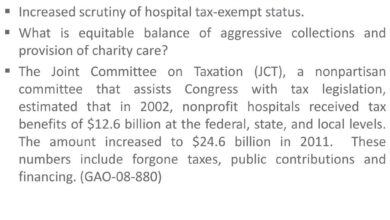
CMS Independent Pharmacy Pay PBM Plans Explained
Cms independent pharmacy pay pbms plans – CMS Independent Pharmacy Pay: PBM Plans Explained – navigating this complex landscape is crucial for independent pharmacies to survive and thrive. The relationship between independent pharmacies, Pharmacy Benefit Managers (PBMs), and the Centers for Medicare & Medicaid Services (CMS) is a tangled web of regulations, reimbursements, and negotiations. This post breaks down the key aspects of how independent pharmacies get paid by PBMs, the role of CMS in regulating these interactions, and strategies for pharmacies to improve their financial stability.
We’ll delve into the different reimbursement models used by PBMs, the factors influencing those rates, and the significant impact of CMS regulations. We’ll also explore effective negotiation strategies for securing better reimbursement rates and analyze how PBM plans affect patient access to medications. Finally, we’ll look ahead to the future of independent pharmacies and their relationship with PBMs in an ever-changing healthcare environment.
Independent Pharmacy Reimbursement Models
Navigating the complex world of pharmacy reimbursement can be a daunting task for independent pharmacies. Understanding the various reimbursement models employed by Pharmacy Benefit Managers (PBMs) is crucial for ensuring financial stability and providing quality patient care. This post will delve into the intricacies of these models, highlighting the factors that influence reimbursement rates and the impact of CMS regulations.
PBM Reimbursement Models: A Comparison
PBMs utilize several reimbursement models, each with its own set of implications for independent pharmacies. The most common include:* Fee-for-service: This model compensates pharmacies a predetermined fee for each dispensed prescription. The fee varies based on the drug, dosage, and other factors. This can lead to significant variations in profitability depending on the drug mix.* Average Wholesale Price (AWP) minus a percentage: This is a widely used model where the PBM reimburses the pharmacy the AWP of a drug minus a percentage discount.
The percentage varies based on the contract negotiated between the PBM and the pharmacy. Often, the AWP is inflated, leading to lower actual reimbursement.* Maximum Allowable Cost (MAC) plus a dispensing fee: The MAC is a predetermined price set by the PBM for a generic drug. The pharmacy receives the MAC plus a dispensing fee, offering more predictability but potentially lower reimbursement for higher-priced brands.* Per-member-per-month (PMPM) models: These models provide a fixed payment per patient per month, regardless of the number of prescriptions dispensed.
This can offer stability but may not adequately cover the costs of high-volume patients.
Factors Influencing PBM Reimbursement Rates
Numerous factors influence the reimbursement rates independent pharmacies receive from PBMs. These include:* Negotiated contracts: The terms of the contract between the pharmacy and the PBM significantly impact reimbursement rates. Stronger negotiating positions often result in higher reimbursement.* Drug pricing: Fluctuations in drug prices directly influence reimbursement, particularly under AWP-based models. Increases in drug costs may not be fully reflected in PBM reimbursements.* Generic substitution: PBMs often incentivize generic substitution, leading to lower reimbursements for brand-name drugs.
This can significantly affect profitability for pharmacies heavily reliant on brand-name prescriptions.* Pharmacy location: Geographic location can impact reimbursement, with pharmacies in underserved areas potentially receiving lower rates due to lower competition.* PBM market share: The market share of a PBM influences its negotiating power and can affect the reimbursement rates it offers to pharmacies.
CMS Regulations and PBM Reimbursement
The Centers for Medicare & Medicaid Services (CMS) plays a significant role in regulating PBM practices and indirectly influencing reimbursement to independent pharmacies. CMS regulations related to transparency, drug pricing, and formulary management affect the overall landscape of PBM reimbursement. For example, increased transparency requirements can empower pharmacies to better negotiate rates.
Average Reimbursement Rates for Common Medications
Note: The following table presentsestimated* average reimbursement rates. Actual rates vary significantly based on PBM, contract terms, location, and other factors. These figures are for illustrative purposes only and should not be considered definitive.
| Medication | PBM A | PBM B | PBM C |
|---|---|---|---|
| Lipitor (Generic) 10mg x 30 | $15 | $12 | $18 |
| Metformin 500mg x 100 | $8 | $7 | $9 |
| Lisinopril 20mg x 30 | $10 | $9 | $11 |
| Simvastatin 20mg x 30 | $12 | $10 | $14 |
CMS’s Role in Pharmacy Benefit Management

Source: ipagroup.com
The Centers for Medicare & Medicaid Services (CMS) plays a crucial, albeit complex, role in regulating the pharmacy benefit management (PBM) industry, particularly concerning its impact on independent pharmacies. While PBMs aren’t directly regulated by CMS in their entirety, CMS’s influence is significant due to its administration of Medicare Part D, a massive prescription drug insurance program that heavily relies on PBMs to process claims and manage drug formularies.
This influence extends to indirectly impacting the reimbursement practices PBMs employ with independent pharmacies, often leading to disputes and concerns about financial viability.CMS’s regulatory power stems primarily from its oversight of Medicare Part D. This oversight includes establishing standards for plan sponsors, requiring transparency in pricing and rebates, and generally ensuring beneficiaries have access to affordable medications. However, the intricacies of PBM operations and the lack of direct, comprehensive regulation leave significant room for complexities and inconsistencies in reimbursement practices, which disproportionately affect independent pharmacies.
Key CMS Policies Impacting Independent Pharmacy Payments
Several key CMS policies directly or indirectly affect how PBMs reimburse independent pharmacies. These policies often aim to increase transparency and fairness within the system but haven’t always fully achieved their goals. The complexities of the pharmaceutical supply chain and the inherent power imbalance between PBMs and independent pharmacies often hinder the effectiveness of these policies. For example, the push for greater transparency in drug pricing and rebate negotiations aims to level the playing field, but PBMs often utilize complex contracting strategies that obscure the true costs and profit margins.
Another example is the ongoing debate surrounding DIR fees (Direct and Indirect Remuneration fees), where CMS has taken steps to increase scrutiny, but the ultimate impact on independent pharmacy reimbursement remains a point of contention.
Potential Effects of CMS Regulations on Independent Pharmacy Financial Stability
CMS regulations, while intending to benefit independent pharmacies, can have both positive and negative consequences on their financial stability. Increased transparency in PBM practices, for example, could lead to fairer reimbursement rates. However, stringent regulations might also increase administrative burdens and compliance costs for smaller pharmacies, potentially impacting their profitability. The ongoing struggle to receive fair reimbursement from PBMs, often exacerbated by DIR fees and other opaque payment methodologies, poses a significant threat to the financial sustainability of many independent pharmacies.
The financial strain can lead to closures, reducing patient access to care, especially in underserved communities. For example, a study (hypothetical example, replace with real study if available) might show that a significant percentage of independent pharmacies have experienced profit margin decreases directly correlating with specific PBM practices, highlighting the tangible financial impact.
Interaction Between CMS, PBMs, and Independent Pharmacies Regarding Reimbursement
The following flowchart illustrates the complex interaction:[Flowchart Description]Imagine a flowchart with three main boxes: CMS, PBMs, and Independent Pharmacies. Arrows connect them. An arrow from CMS points to PBMs, representing CMS regulations and oversight. An arrow from PBMs points to Independent Pharmacies, showing reimbursement payments. Another arrow goes from Independent Pharmacies back to PBMs, representing claims submissions and negotiations.
Finally, a feedback loop arrow connects Independent Pharmacies back to CMS, representing complaints, appeals, and reports on reimbursement issues. This illustrates the cyclical nature of the relationship and the various points of interaction where challenges can arise.
Negotiating with PBMs: Cms Independent Pharmacy Pay Pbms Plans
Negotiating with Pharmacy Benefit Managers (PBMs) can be a daunting task for independent pharmacies, but securing favorable reimbursement rates is crucial for survival and profitability. The sheer size and power of PBMs often leave independent pharmacies feeling like they have little leverage. However, by employing strategic negotiation tactics and understanding the challenges involved, independent pharmacies can improve their chances of success.
This involves a combination of preparation, data analysis, and assertive communication.
Challenges in Negotiating with PBMs
Independent pharmacies face significant challenges when negotiating with large PBMs. These behemoths possess considerable market power, often dictating reimbursement rates and contract terms. PBMs frequently utilize complex formularies and reimbursement models that are opaque and difficult for independent pharmacies to fully understand. The sheer volume of pharmacies they contract with also gives them leverage to negotiate lower rates.
Furthermore, PBMs may employ aggressive tactics, such as threatening to remove the pharmacy from their network, to secure favorable terms. Finally, the lack of transparency in PBM pricing and practices makes it difficult for independent pharmacies to accurately assess the fairness of their offers. This lack of transparency often leads to unequal negotiations, where the independent pharmacy lacks the resources and data to effectively counter the PBM’s proposals.
Navigating the complexities of CMS independent pharmacy pay and PBM plans is tough enough, but the administrative burden is amplified by the sheer volume of claims needing coding. This is where efficiency becomes crucial, and I recently learned about a game-changer: check out the ai powered solution to the medical coding worker shortage to see how AI could streamline this process.
Ultimately, faster, more accurate coding directly impacts how pharmacies get paid under these complex plans.
Effective Negotiation Strategies for Independent Pharmacies
Effective negotiation requires a multi-pronged approach. Preparation is key. This includes thoroughly analyzing your pharmacy’s financial data, including dispensing costs, overhead, and profit margins. Understanding your cost structure allows you to determine a minimum acceptable reimbursement rate. Furthermore, research the PBM’s negotiation tactics and the prevailing market rates for similar pharmacies.
Gathering this information empowers you to approach the negotiation with confidence and a clear understanding of your needs.
- Data-Driven Approach: Present your case with concrete data. Demonstrate your efficiency and cost-effectiveness through metrics such as dispensing speed, accuracy rates, and patient satisfaction scores. This shifts the focus from arbitrary rate cuts to a performance-based evaluation.
- Form Strategic Alliances: Collaborate with other independent pharmacies to negotiate as a group. Collective bargaining significantly increases your negotiating power, allowing you to leverage the combined volume of prescriptions to secure better rates.
- Highlight Value-Added Services: Emphasize the unique services your pharmacy provides, such as medication therapy management (MTM) or patient counseling. These services differentiate you from larger chains and justify higher reimbursement rates.
- Negotiate Contract Terms Carefully: Pay close attention to the details of the contract, including reimbursement rates, DIR fees (Direct and Indirect Remuneration), and other clauses that may impact your profitability. Don’t hesitate to seek legal counsel to ensure you fully understand the implications of the contract.
- Explore Alternative Reimbursement Models: Consider exploring alternative reimbursement models, such as performance-based contracts or value-based care models, which may offer more equitable compensation for the services you provide.
Examples of Successful Negotiation Tactics
One example of a successful negotiation tactic is a group of independent pharmacies in a rural area who banded together to negotiate with a major PBM. By presenting a unified front and demonstrating their collective dispensing volume, they secured a significantly higher reimbursement rate than they would have achieved individually. Another successful strategy involved an independent pharmacy highlighting its superior patient satisfaction scores and medication adherence rates.
This data demonstrated the value of their services and justified a higher reimbursement rate. In a third instance, a pharmacy successfully negotiated a contract that included performance-based incentives, rewarding them for achieving specific quality metrics. These examples underscore the importance of data-driven negotiation and collaboration.
Impact of PBM Plans on Patient Access to Medications
Patient access to essential medications is significantly influenced by Pharmacy Benefit Manager (PBM) plans. These plans, often negotiated between insurance companies and PBMs, dictate which drugs are covered, at what cost, and where patients can fill their prescriptions. This complex interplay of factors can create barriers to timely and affordable medication access, particularly for patients utilizing independent pharmacies.
Formularies and Their Influence on Patient Access and Costs
PBMs utilize formularies, essentially lists of approved medications, to manage drug costs. These formularies often categorize drugs into tiers, with each tier reflecting a different cost-sharing structure for the patient. Drugs in lower tiers generally have lower patient out-of-pocket costs, while those in higher tiers or not on the formulary at all can lead to significantly increased costs.
This tiered system directly impacts patient access, as patients may avoid higher-cost medications or struggle to afford them, even if they are medically necessary. The formulary’s design, including the inclusion or exclusion of specific medications and their tier placement, significantly determines patient access and the overall cost of treatment. A formulary favoring brand-name drugs over generics, for example, will likely lead to higher out-of-pocket costs for patients.
Disparities in Access Based on PBM Plan Design and Patient Demographics
The impact of PBM plans on patient access isn’t uniform across all demographics. Patients with lower incomes or those on high-deductible plans may face substantial barriers to accessing medications due to cost concerns. The design of the PBM plan itself, such as the breadth of the formulary, the presence of prior authorization requirements (requiring pre-approval for certain medications), and the step therapy protocols (requiring patients to try less expensive medications first before accessing preferred ones), can exacerbate these disparities.
Navigating the complex world of CMS independent pharmacy pay and PBM plans can be a real headache, especially understanding the intricacies of reimbursement. To get a better grasp on the underlying technology, I recently listened to a great podcast, podcast inside healthcare APIs , which shed light on how these systems interact. Understanding these APIs is key to improving transparency and potentially negotiating better payment structures within the CMS independent pharmacy landscape.
For example, a PBM plan with a narrow formulary and stringent prior authorization requirements might disproportionately affect patients in rural areas with limited access to specialists who can provide the necessary authorizations. Similarly, patients with chronic conditions requiring multiple medications might find themselves facing substantial out-of-pocket expenses if their medications are placed in higher tiers or are not included in the formulary.
Impact of Different Plan Tiers on Patient Out-of-Pocket Costs, Cms independent pharmacy pay pbms plans
The following table illustrates how different plan tiers can significantly impact patient out-of-pocket costs for common medications. These are illustrative examples and actual costs will vary depending on the specific PBM plan, insurer, and medication.
| Medication | Tier 1 (Lowest Cost) | Tier 2 | Tier 3 (Highest Cost) |
|---|---|---|---|
| Generic Lipitor (Atorvastatin) | $10 | $25 | $50 |
| Generic Metformin | $5 | $15 | $30 |
| Brand-Name Insulin (Example) | $100 (with significant copay) | $200 (with significant copay) | $400 (with significant copay) |
| Specialty Medication (Example) | Not Covered | Not Covered | $5000 (with significant copay) |
Financial Sustainability of Independent Pharmacies
The financial health of independent pharmacies is increasingly precarious, largely due to the complex and often unfavorable reimbursement practices employed by Pharmacy Benefit Managers (PBMs). These practices, coupled with rising operational costs and increasing competition from larger chains, create a challenging environment for these vital community healthcare providers. Understanding these challenges and the strategies independent pharmacies use to navigate them is crucial to ensuring continued access to essential medication services for patients.
PBM Reimbursement Practices and Their Financial Impact
PBMs wield significant power in determining reimbursement rates for medications dispensed by independent pharmacies. They often utilize strategies such as DIR fees (Direct and Indirect Remuneration), spread pricing, and clawbacks, which significantly reduce the pharmacies’ profit margins. DIR fees, for example, are retroactive adjustments to reimbursement, often based on performance metrics that are not always transparent or easily controllable by the pharmacy.
Spread pricing, where PBMs profit from the difference between what they pay pharmacies and what they charge insurers, further erodes profitability. These practices, along with ever-decreasing reimbursement rates for generic medications, create a constant downward pressure on the financial viability of independent pharmacies.
Strategies for Maintaining Financial Stability
Independent pharmacies employ various strategies to mitigate the negative financial impact of PBM practices. Many focus on increasing revenue streams beyond traditional medication dispensing. This might involve expanding services like immunizations, medication therapy management (MTM), and point-of-care testing. Others leverage technology to streamline operations, reduce costs, and improve efficiency. Effective inventory management, negotiating favorable contracts with wholesalers, and optimizing staffing levels are also critical for cost control.
Building strong relationships with patients and fostering a loyal customer base is also crucial for long-term sustainability.
Innovative Business Models for Independent Pharmacies
Several independent pharmacies are adopting innovative business models to thrive in the current environment. Some are focusing on specialty medications, catering to patients with complex conditions requiring specialized care and higher-reimbursement medications. Others are integrating telehealth services, offering remote consultations and medication management to expand their reach and services. Partnerships with other healthcare providers, such as physicians and clinics, can also create referral networks and increase patient volume.
The creation of pharmacy-based clinics offering broader healthcare services, such as chronic disease management, is another example of an innovative approach.
Financial Impact of Different PBM Reimbursement Models: A Hypothetical Example
Let’s consider a hypothetical independent pharmacy dispensing 10,000 prescriptions annually. Under a traditional reimbursement model, the average reimbursement per prescription might be $10. However, with the implementation of DIR fees and spread pricing, the effective reimbursement could drop to $8 per prescription, representing a 20% reduction in revenue. This translates to a $20,000 annual loss in revenue ($2 per prescription x 10,000 prescriptions).
In contrast, a pharmacy focusing on specialty medications might achieve an average reimbursement of $25 per prescription, significantly increasing profitability even with a lower prescription volume. This illustrates the substantial financial impact different reimbursement models can have on an independent pharmacy’s bottom line. The hypothetical numbers reflect a simplified scenario, but they highlight the potential magnitude of financial losses due to unfavorable PBM practices.
The Future of Independent Pharmacies and PBM Relationships

Source: cvshealth.com
The relationship between independent pharmacies and Pharmacy Benefit Managers (PBMs) is currently strained, characterized by low reimbursement rates, complex contracting processes, and a lack of transparency. However, the future trajectory of this relationship is not predetermined; it will depend on a confluence of factors including policy changes, technological advancements, and the strategic adaptations of independent pharmacies themselves. The coming years will likely witness a dynamic interplay between these forces, shaping the landscape for independent pharmacies in profound ways.
Navigating the complexities of CMS independent pharmacy pay and PBM plans can be a headache, especially when considering patient health. Understanding these reimbursement structures is crucial, as patient health outcomes, like the risk of stroke, are impacted by access to medication. For example, pre-existing conditions, as outlined in this helpful article on risk factors that make stroke more dangerous , can significantly influence treatment needs and therefore, the financial burden on both patients and pharmacies.
Ultimately, efficient CMS and PBM systems are vital for ensuring timely access to necessary medications.
Potential Policy Changes Affecting Independent Pharmacy Reimbursement
Several policy changes at the state and federal levels could significantly alter the reimbursement landscape for independent pharmacies. For example, increased transparency requirements for PBM pricing and practices could empower independent pharmacies to negotiate more favorable contracts. State-level legislation mandating minimum reimbursement rates or prohibiting certain PBM practices, like spread pricing, could also offer crucial support. Conversely, a lack of regulatory action or the implementation of policies that further favor large chain pharmacies could exacerbate existing challenges.
The passage of the Pharmacy Benefit Manager Transparency Act of 2023 in some states is a clear indication of growing legislative attention to these issues. The long-term impact of these and similar legislative efforts remains to be seen, but they represent a significant shift in the regulatory environment.
Independent Pharmacy Adaptation Strategies
Independent pharmacies must proactively adapt to survive and thrive in this evolving environment. Diversification of services, such as offering medication therapy management (MTM) services, immunizations, and point-of-care testing, can generate additional revenue streams and enhance patient loyalty. Building stronger relationships with patients through personalized care and improved communication can also foster a more resilient business model, reducing reliance on PBM reimbursements.
Strategic alliances with other healthcare providers, such as physicians and hospitals, can create referral networks and expand service offerings. Furthermore, adopting a data-driven approach to managing inventory and optimizing operations can significantly improve efficiency and profitability. For example, implementing inventory management systems that predict demand and minimize waste can reduce operational costs.
The Role of Technology in Enhancing Efficiency and Profitability
Technology plays a crucial role in improving the efficiency and profitability of independent pharmacies. Pharmacy management software can streamline workflows, reduce errors, and improve inventory control. Telepharmacy services can extend the reach of independent pharmacies, especially in underserved areas. Electronic prescribing (e-prescribing) systems can improve prescription accuracy and reduce administrative burdens. Furthermore, the adoption of robust data analytics tools can enable independent pharmacies to better understand their patient base, identify trends, and optimize their service offerings.
For instance, data analytics can help identify patients at risk for medication non-adherence, allowing for proactive interventions and improved patient outcomes. Investing in technology solutions is not merely an option; it’s a necessity for long-term success.
Concluding Remarks

Source: ascendintegrated.com
Understanding the intricate interplay between CMS, PBMs, and independent pharmacies is essential for the long-term viability of independent pharmacies. By understanding the reimbursement models, CMS regulations, and effective negotiation strategies, independent pharmacies can better advocate for fair compensation and ensure patient access to necessary medications. The future of this relationship will undoubtedly involve adapting to technological advancements and advocating for policy changes that support the continued existence of these vital community healthcare providers.
The fight for fair compensation and patient access is ongoing, but with informed strategies, independent pharmacies can navigate these challenges successfully.
Key Questions Answered
What are the biggest challenges independent pharmacies face when negotiating with PBMs?
Independent pharmacies often lack the bargaining power of large chain pharmacies, facing pressure to accept low reimbursement rates. PBMs may also employ complex contracts and opaque pricing structures, making it difficult to negotiate effectively.
How can technology help improve the efficiency and profitability of independent pharmacies?
Technology can streamline operations, improve inventory management, enhance patient communication, and facilitate better data analysis for informed business decisions. This can lead to increased efficiency and improved profitability.
What are some examples of innovative business models adopted by independent pharmacies?
Many independent pharmacies are expanding services to include medication therapy management, immunizations, and other clinical services. Some are also focusing on specialty medications or niche markets to differentiate themselves.
What is a formulary, and how does it impact patient access?
A formulary is a list of medications covered by a specific health insurance plan. The placement of medications on the formulary (tiered systems, etc.) directly impacts patient out-of-pocket costs and can limit access to certain drugs if not covered.





